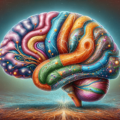Addiction is a complex and multifaceted challenge, involving not just the physical but also the emotional and behavioral aspects of a person’s life. Understanding the role of emotions and activities in addiction, relapse, and recovery is vital for those grappling with substance use disorders (SUDs), their loved ones, and healthcare professionals. This article delves into these aspects, integrating scientific insights with an accessible narrative.
The Emotional Landscape of Addiction

Addiction is more than just a series of chemical reactions; it’s deeply intertwined with an individual’s emotional state. Substance use often starts as a means to cope with negative emotions such as stress, anxiety, or depression. Over time, the brain’s reward system is hijacked, leading to an emotional dependency on the substance.
Researches indicate that individuals with SUDs have significantly greater difficulties in emotion regulation compared to those without such disorders. Systematic reviews found that people with SUDs exhibited poorer emotion regulation across various subscales, with the largest deficits in strategies and impulse control. This suggests a complex interplay between emotional distress and the propensity for substance use and relapse.
Addiction to substances, including alcohol, stimulants, opiates, and cannabis, can influence emotions by either alleviating negative emotions or intensifying positive ones. For some individuals, substances may serve as a means to relax during stressful times or enhance the enjoyment of positive experiences. This use of substances as a form of emotion regulation can lead to a “crowding out” effect, where drug-related emotions dominate an individual’s perspective, leading to a loss of interest in other activities and emotional salience of non-drug-related experiences. Over time, this emotional dysregulation can spiral into compulsive drug use and loss of control over drug intake.
However, there was a high degree of heterogeneity across studies, indicating variability in the results which could be due to methodological differences, substance types, and other factors. This is not an easy question with many variables, and we will only briefly go through their diversity.
Emotional Triggers and Substance Use

Understanding the nuances of emotional triggers in substance use is key to addressing the root causes of addiction. Emotions are not just feelings; they are complex psychological and physiological responses that can heavily influence behavior, including the use of drugs.
Identifying Emotional Triggers
Emotional triggers can vary widely among individuals. Common triggers include:
- Stress: Often, individuals turn to substances as a way to manage or escape stress. The temporary relief provided by substances can create a compelling, albeit harmful, coping mechanism.
- Anxiety and Depression: For those struggling with anxiety or depression, substances may seem like a quick fix to alleviate these feelings. Many individuals with addiction start using substances as a form of self-medication, seeking relief from stress, anxiety, or depression. However, this can lead to a cycle where the reliance on substances worsens the underlying emotional state.
- Trauma: Experiences of trauma are significantly linked to substance use disorders. Using substances can be a way to numb the pain or avoid dealing with traumatic memories.
- Social and Environmental Cues: Certain social settings or environments can evoke emotions that trigger substance use, especially if these settings were previously associated with use.
A critical step in breaking the cycle of addiction is developing emotional awareness and management skills. Techniques such as cognitive-behavioral therapy (CBT), mindfulness, and emotional regulation strategies can be highly effective. These approaches help individuals recognize their emotional triggers and develop healthier coping mechanisms.
Neurobiology of Emotions in Addiction
At the heart of the emotional aspect of addiction is the brain’s reward system. I discussed this aspect in detail in the last article Neuroscience about Drug Reward and Addiction, and now just a couple of words to repeat.
The reward system, primarily involving the neurotransmitter dopamine, plays a crucial role in the experience of pleasure and motivation. Dopamine is often called the “feel-good” neurotransmitter because of its role in experiencing pleasure. In the context of substance use, drugs can cause an abnormal increase in dopamine levels, which creates a powerful sense of euphoria. Over time, the brain’s chemistry and structure can change, making it increasingly difficult to experience pleasure from anything other than the substance.
Chronic substance use can lead to emotional dysregulation, where an individual finds it challenging to manage and healthily respond to emotions. This dysregulation is partly due to the impact of substances on brain regions like the prefrontal cortex, which is crucial for impulse control and emotional regulation.
The cycle of emotional dependence on substances is a critical aspect of addiction. As the individual continues using the substance to cope with negative emotions, their ability to deal with these emotions without the substance diminishes. This creates a vicious cycle where emotional distress leads to substance use, which in turn leads to more emotional distress.
The Role of Activities in Addiction and Recovery

The role of activities in both perpetuating addiction and aiding recovery is profound and multifaceted. Let’s first explore how certain activities can act as triggers.
Understanding Activity-Based Triggers
- Routine Associations: Many individuals develop routines that incorporate substance use, such as drinking while watching sports or using drugs in specific social settings. These routines can create powerful associations, where the activity itself can trigger a craving.
- Environmental Cues: Places and activities linked to past substance use can serve as strong cues. For example, visiting a bar where one used to drink or meeting friends with whom one used drugs can reignite the urge to use substances.
- Stressful or High-Risk Situations: Engaging in stressful activities, like certain types of work or social interactions, can increase the desire to use substances as a form of escape or relief.
To counteract these triggers, it’s important to develop new, healthier routines and to avoid or manage high-risk situations. This might involve finding new leisure activities, avoiding certain places, or learning stress management techniques.
Therapeutic Activities in Recovery
Shifting focus to recovery, engaging in positive, therapeutic activities plays a crucial role.
- Physical Exercise: Exercise is a powerful tool in recovery. It not only improves physical health but also releases endorphins, natural mood lifters, which can help reduce cravings and improve mental health.
- Mindfulness and Meditation: These practices help in developing greater self-awareness and control over one’s thoughts and emotions, reducing the likelihood of relapse.
- Creative Outlets: Activities like art, music, and writing offer a way to express emotions and process experiences, which is especially beneficial for those who have difficulty expressing themselves verbally.
- Volunteering and Community Engagement: Participating in community service can provide a sense of purpose and fulfillment, which is essential in recovery.
Engaging in these activities helps in multiple ways:
- Replacing Negative with Positive: These activities create new, positive associations and habits, replacing the old, harmful ones linked to substance use.
- Enhancing Mental Health: Activities like exercise and meditation improve overall mental health, making it easier to cope with stress and negative emotions without turning to substances.
- Building a Supportive Network: Many of these activities can be social, helping individuals in recovery build a network of supportive, like-minded people.
Activities and Long-Term Recovery
For sustainable recovery, incorporating these activities into one’s daily life is key. This involves:
- Creating a Structured Routine: A regular schedule filled with positive activities provides stability and reduces the likelihood of relapse.
- Continuous Engagement: Long-term recovery is supported by continually engaging in these activities, making them a part of one’s lifestyle rather than just a temporary phase.
The role of activities in addiction and recovery is pivotal. While certain activities can trigger substance use, engaging in positive, therapeutic activities is integral to recovery. These activities help rewire the brain’s reward system, provide healthy coping mechanisms, and offer a sense of fulfillment and purpose. Ultimately, they are crucial in supporting a life of well-being and sobriety.
Relapse: An Intersection of Emotions and Activities

Relapse in the context of substance use disorders is often not a singular event but a process influenced by a complex interplay of emotional states and activities. Understanding this intersection is crucial for effective relapse prevention strategies. Relapse can be viewed as a confluence of internal emotional triggers and external environmental factors, each influencing the other. Of course, they will overlap with the triggers mentioned above, but at the same time, they have their differences and peculiarities since we are talking about a different process – relapse.
Relapse Emotional Triggers
- Negative Emotions: Feelings of stress, anxiety, depression, or loneliness can lead individuals to seek relief in substances, as they might have in the past.
- Positive Emotions: Paradoxically, positive emotions and states such as excitement or overconfidence can also trigger relapse. In these states, an individual might underestimate their vulnerability to cravings or feel they can control their substance use.
- Unresolved Psychological Issues: Deeper psychological issues, if not adequately addressed, can resurface, leading to relapse. This includes trauma, unresolved grief, or chronic stress.
Activity-Based Relapse Triggers
- Familiar Environments and Routines: Places or situations previously associated with substance use can trigger cravings. This includes social settings, certain times of the day, or specific activities.
- Social Pressure and Influence: Interaction with people who use substances or those not supportive of recovery can increase the risk of relapse.
- Complacency in Recovery: Slipping away from activities that support sobriety, such as skipping therapy sessions or support group meetings, can gradually lead to relapse.
The Process of Relapse
Understanding relapse as a process can help in its prevention. This process often begins long before the actual act of using the substance and involves emotional and mental relapse stages.
- Emotional Relapse: During this stage, individuals are not actively thinking about using. However, their emotional state and behaviors may be setting the stage for relapse, such as bottling up emotions, isolating, or neglecting self-care.
- Mental Relapse: In this phase, the individual starts to think about using again. There might be a mental struggle, with part of them wanting to use and part of them wanting to maintain sobriety.
Strategies for Prevention
Preventing relapse requires a multifaceted approach that addresses both emotional triggers and activity-based risks.
- Developing Emotional Resilience: Therapy, counseling, and support groups can help build the skills necessary for managing negative emotions and psychological stressors without resorting to substance use.
- Mindfulness and Awareness: Being mindful of one’s thoughts and feelings can provide early warning signs of emotional or mental relapse.
- Healthy Routine and Structure: Maintaining a structured daily routine with positive activities and regular participation in recovery-oriented activities is crucial.
- Support Systems: Building and maintaining a robust support system, including friends, family, and support groups who understand and support the recovery journey, is vital.
- Continuous Self-Care: Engaging in regular self-care practices, such as exercise, proper nutrition, and sufficient rest, supports overall well-being and resilience.
Relapse is not a sign of failure but rather a signal that certain aspects of one’s recovery plan need adjustment. By understanding the intricate relationship between emotions, activities, and relapse, individuals in recovery can develop more robust strategies to maintain their sobriety. Continuous self-awareness, emotional management, and active engagement in positive activities are key pillars in building a sustainable recovery journey.
Final Thoughts

In summary, the role of emotions and activities in addiction, relapses, and recovery is profound and multi-dimensional. Addressing these aspects with a nuanced understanding and comprehensive approach is crucial for effective treatment and sustainable recovery. It’s a journey of transformation, requiring patience, perseverance, and a compassionate understanding of the complexities involved in the struggle with substance use disorders. By focusing on emotional and behavioral health, individuals can navigate the path to recovery, finding not just sobriety, but a renewed sense of purpose and fulfillment in life.





I was recommended this website by my cousin. I am not sure whether this post is written by him as nobody else know such detailed about my difficulty. You are wonderful. Thanks!